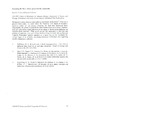- ALSA Home
- →
- Multimedia
- →
- Speeches, Talks and Presentations
- →
- View Item
JavaScript is disabled for your browser. Some features of this site may not work without it.
| dc.contributor.author | en_ZA | |
| dc.contributor.author | Lee, J.E. | |
| dc.contributor.author | Chown, S.L. | |
| dc.coverage.spatial | en_ZA | |
| dc.coverage.spatial | Antarctic | |
| dc.date.accessioned | 2021-02-23T19:05:09Z | |
| dc.date.available | 2021-02-23T19:05:09Z | |
| dc.date.created | 2007/10/09 | |
| dc.date.issued | 2007/10/09 | |
| dc.identifier.uri | http://hdl.handle.net/123456789/27862 | |
| dc.description.abstract | Biological invasions threaten biodiversity in every biome on the planet1 2. If we are to preserve biodiversity, we must reduce the frequency and impact of invasions. However, before we can manage invasions, we must first understand them. Traditionally, the process of invasion has been broken down into a series of barriers, each one representing a particular suite of ecological or physiological challenges an organism must overcome3. What we do not yet fully understand is what type and quantity of organisms cross each of these barriers. Using the South African National Antarctic Programme logistics operation as a model system, we investigate the various stages of an invasion, identifying biosecurity weaknesses and suggesting possible management solutions. | en_ZA |
| dc.description.sponsorship | Sponsored by the Department of Science and Innovation(DSI) through the National Research Foundation (South Africa) | en_ZA |
| dc.description.statementofresponsibility | Antarctic Legacy of South Africa | en_ZA |
| dc.format | en_ZA | |
| dc.format | en_ZA | |
| dc.language | English | en_ZA |
| dc.language.iso | en_ZA | en_ZA |
| dc.publisher | en_ZA | |
| dc.publisher | South African National Antarctic Programme (SANAP) | en_ZA |
| dc.relation | en_ZA | |
| dc.relation | SANAP Symposium 2007 | en_ZA |
| dc.relation.ispartof | en_ZA | |
| dc.relation.ispartof | ARESSA THEME III: Biodiversity: Responses to Earth System Variability (Oral Presentations) | en_ZA |
| dc.rights | Copyright. | en_ZA |
| dc.rights | Copyright | en_ZA |
| dc.subject | SANAP Symposium 2007 | en_ZA |
| dc.subject | Antarctic | en_ZA |
| dc.subject | Terrestrial Science | en_ZA |
| dc.subject | Living Systems | en_ZA |
| dc.subject | Research | en_ZA |
| dc.subject | Alien Species | en_ZA |
| dc.subject | Invasive Species | en_ZA |
| dc.subject | Biodiversity | en_ZA |
| dc.subject | Biosecurity | en_ZA |
| dc.title | Crossing the line: Alien species in the Antarctic | en_ZA |
| dc.type | Abstracts | en_ZA |
| dc.rights.holder | Lee, J.E. | en_ZA |
| dc.rights.holder | Chown, S.L. | en_ZA |
| iso19115.mdconstraints.uselimitation | This item and the content of this website are subject to copyright protection. Reproduction of the content, or any part of it, other than for research, academic or non-commercial use is prohibited without prior consent from the copyright holder. | en_ZA |
| iso19115.mddistributor.distributorcontact | South African National Antarctic Programme (SANAP) | en_ZA |
| iso19115.mdformat.name | en_ZA | |
| iso19115.mdidentification.deliverypoint | Antarctic Legacy of South Africa, Faculty of Science, Private Bag X1, Matieland. Stellenbosch. South Africa. | en_ZA |
| iso19115.mdidentification.electronicmailaddress | antarcticlegacy@sun.ac.za | en_ZA |
| iso19115.mdidentification.organizationname | en_ZA | |
| iso19115.mdidentification.organizationname | Stellenbosch University | en_ZA |
Files in this item
This item appears in the following Collection(s)
-
Speeches, Talks and Presentations [66]
Speeches, talks and presentations deliver by members of the SANAP community

